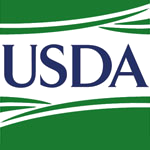Understanding USDA Property Eligibility Criteria
USDA home loans are aimed at uplifting rural communities across the United States, offering financial assistance to potential homebuyers in designated areas. However, to qualify for a USDA loan, a property must adhere to certain eligibility criteria, encompassing rural area designation, occupancy status, and the home’s physical condition.
The good news is that a substantial portion of the country falls under the USDA’s qualified rural area definition. Nevertheless, prospective buyers must ascertain a property’s eligibility status before proceeding further.
Specific Property Requirements for USDA Home Loans
To help determine a home’s eligibility, the USDA provides an interactive map that outlines property eligibility areas. Regions highlighted in yellow are presently ineligible for a USDA home loan. As property eligibility areas may change annually based on factors like population size, the map serves as a helpful guide, but the final determination rests with the USDA upon the submission of a complete loan application.
To use the USDA eligibility map:
- Go to the USDA Property Eligibility Map
- Click ACCEPT (or if you don’t see ACCEPT, then click on Single Family Housing Guaranteed, then Property Eligibility
- Enter the address of a property you are thinking about buying, or zoom in/around on the map to see eligible areas.
The USDA classifies a “rural” area as one located outside of towns or cities and unrelated to urban zones. This definition encompasses areas with populations not exceeding 10,000, or those not surpassing 20,000 and not situated within a metropolitan statistical area (MSA).
Fortunately, numerous small towns and suburbs in metropolitan vicinities meet these requirements, including the Little Miami School District areas of Maineville, OH, and Morrow, OH.
Other Key Eligibility Requirements for USDA Home Loans
Apart from the rural location, USDA loans have specific property requirements to safeguard the borrower’s interests. The home should primarily serve as the borrower’s primary residence. So, investment properties like rental or vacation homes, and other income-producing estates are generally not eligible.
The USDA also mandates that the home be structurally sound, functionally adequate, and in good repair. A qualified appraiser will inspect the property to certify its compliance with HUD’s Single Family Housing Policy Handbook, which includes standards for access, structural integrity, roofing, heating and cooling systems, electrical system, plumbing, and water flow.
Moreover, the USDA enforces credit and income requirements, with income limits varying by location and household size. Income limits are adjusted for family size and intended to assist low to middle-income families. In Maineville, OH, and Morrow, OH, the base income limits are $116,300 for a 1-4 member household and $153,500 for a 5-8 member household.
While there is no minimum credit score requirement, a 640 or higher score will make the process much simpler.
The USDA property eligibility map provides a general overview of qualified locations, but it is essential to consult a Mortgage Loan Officer that is an expert on USDA loans, such as T.C. Strait / Mortgage Loan Officer, to confirm a location’s eligibility due to potential changes in eligibility criteria over time.
Overall, USDA loans present a valuable opportunity for individuals and families looking to settle in rural areas such as Maineville, OH, and Morrow, OH, fostering community development and homeownership in these regions.

